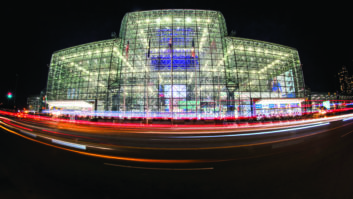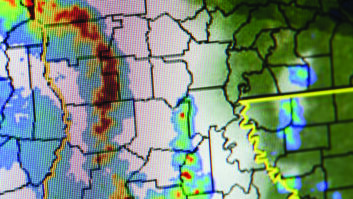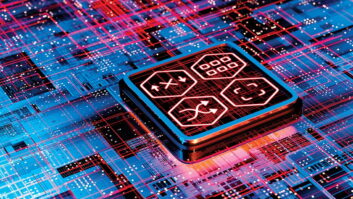How was Your NAB Experience?
May 1, 2007 12:00 PM, Chriss Scherer
[email protected]
It’s behind us now, but overall, NAB2007 seemed to be a good convention for everyone. We’re still compiling all the specifics for our June issue, but until then, I’ll share some immediate impressions from the annual gathering.

For radio attendees, the most obvious change was in the layout of the North Hall. For several years, the east end of the North Hall has been the radio exhibits area. This year, the radio exhibits were in the west end, and the east end hosted companies mostly focused on production. In addition, more pro audio exhibits were included in the North Hall.
Before the convention, some manufacturers told me that they were not pleased with the layout change. My feeling is that the change wasn’t really that big of a deal. Exhibits were shifted a little. As an attendee, you’re going to find the companies you want to see no matter where they are. As it is, having audio for other applications seems to have helped draw more booth visitors to the North Hall as well, which usually helps all the exhibitors.
Personally, I still prefer the North Hall. It’s a comfortable size, it’s well lit and it’s not too loud. The Central Hall is a close second. I dread having to go to the South Halls. The exhibits are huge, and the overall noise level is excessive. I will say that the noise level in the South Halls seemed to be lower this year than in previous years.
The big question during and after every convention: what was hot? The easy answer is the Radio magazine Pick Hit awards. These 15 products are now part of a tradition that started in 1985. Look for the winners at RadioMagOnline.com and in next month’s issue.
Beyond the Pick Hits, there are general observations as well.
There are always new products on display, but was there really a major breakthrough? I’m sure that some exhibitors would say yes, but the general feeling that I heard and experienced myself was no.
Don’t misunderstand my meaning, there were lots of innovative ideas. Some included more affordable variations of existing ideas (more punch, lower cost). Some tied two or more existing ideas into a new application. Some just found a better way to accomplish an existing task.
Have we reached a point where everything has been invented? I doubt it. I think we have reached a certain plateau where we know that processing power, data rates and overall efficiency will continue on a curve, and ideas formed today can be targeted to deliver on a predicted point on that curve.
New products right now are based on incremental improvement, not sweeping change. That’s a comfortable position in which we have resided for the last few conventions, and it allows us to adapt and adjust. I think we’re on the verge of the technology rise, so the coming conventions will likely have some significant breakthroughs.
All that said, what was the prominent focus? Once again, it was IP. It’s hard to not find something with some form of networking (usually IP) in it now. This has been gradually increasing each year and includes not just IP control, but audio over IP as well.
HD Radio continues its steady progress. The latest concepts being shown were an electronic program guide and conditional access. Both are not yet ready for implementation, but the ideas are there and the right time will come.
But HD Radio wasn’t alone in the digital radio focus. FM Extra continues to attract attention, and a batch of receivers helps to show that it has both sides of the equation covered. Some of the data capabilities were also demonstrated. DRM had some presence, too.
In general, it was another year of incremental advances, but they were important advances nonetheless. The radio broadcasting and digital media foundation continues to be augmented and diversified, which prepares us for the next wave of advances.












